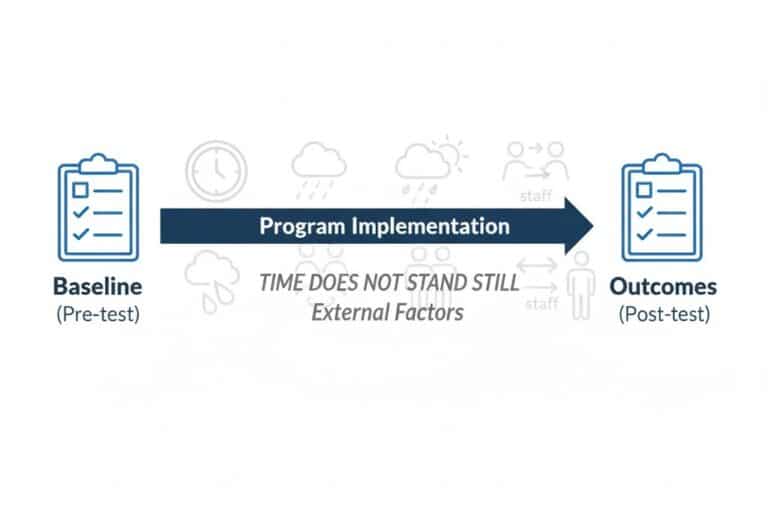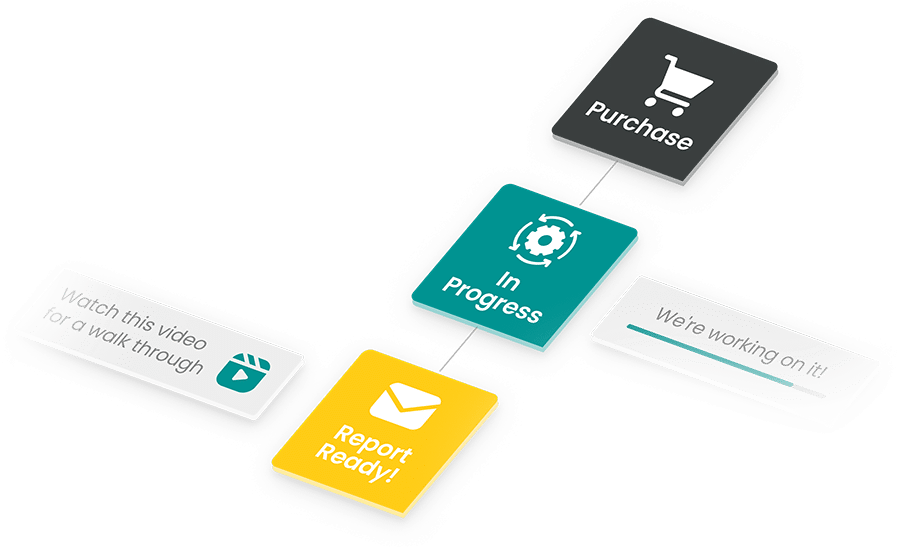You’ve seen it. On websites. In slide decks. Written across the top of grant proposals in bold. These days, just about everything in education is marketed as evidence based. Evidence based practice in education empowers teachers to use proven strategies, delivering better outcomes and fostering a culture of continuous improvement.
The phrase is everywhere. It sells programs, wins contracts, and justifies decisions. But ask ten people what it actually means, and you’ll get ten different answers, and maybe a few blank stares.
At its best, “evidence-based” should signal rigor. Real research. Measurable outcomes. But in practice, it often means something a lot more vague.
Sometimes, it’s a glowing quote from a teacher. Sometimes it’s a case study written by the company selling the product. Sometimes it’s just, “Well, we’ve always used it.”
That’s not evidence. That’s tradition. Or optimism. Or a really great anecdote.
It’s kind of like putting “organic” on a bag of chips. It sounds good. It feels responsible. But you’re not totally sure what’s in it or whether it’s worth the price.
Good stories have their place. But when you’re deciding whether to renew a half-million-dollar curriculum contract or pitch your intervention to a district superintendent, stories alone don’t cut it. They don’t answer the questions that matter.
So, what does “evidence-based” actually need to mean if we’re going to take it seriously?
The Buzzword Trap: Why Evidence-Based Got Blurry
At its core, the idea behind “evidence-based” education was a good one. Spend the budget on what works. Make decisions based on data, not hunches. Focus on what moves the needle for students.
But the phrase got overused. It lost its shape. Now it shows up everywhere from product one-pagers to procurement meetings with very little accountability behind it. Here’s what “evidence-based” often looks like in the wild:
- A website claims, Our program is backed by evidence.
- A grant proposal says, We use evidence-based strategies.
- A vendor tells a district, We’re aligned with what the research says.
But ask for the details, and the picture gets fuzzy. Maybe there’s a decade-old study attached to a previous version of the product. Maybe there’s a one-off pilot that went well for a handful of students. Maybe there’s no data at all, just testimonials from happy teachers.
In theory, “evidence-based” is supposed to stand for rigor. In practice, it’s become a catch-all phrase with no clear definition. And when that happens, people will stop trusting it.
Which is a problem if you’re making decisions that impact tens of thousands of students.
- If you’re a district leader, you can’t afford to gamble on wishful thinking. Your job is to invest in tools that work, not just ones that sound good.
- If you’re in EdTech, it’s not enough to say your product is engaging. You need to show it leads to better outcomes.
- If you run an educational nonprofit, your funders expect more than passion. They expect impact. And that means data.
At the end of the day, “evidence-based” only matters if the evidence holds up.
What Actually Counts as Real Evidence?
A real evidence-based decision is one informed by valid, reliable, and timely data ideally gathered by someone who doesn’t have a stake in the outcome. In other words, the data should be recent. It should be measurable. And it should be collected and interpreted in a way that’s neutral and fair.
This is where independent educational program evaluations come in. They’re designed to answer the question every leader needs to ask: Is this working?
Here’s what counts:
- Quantitative data: This is the numbers side of the story: test scores, attendance records, behavior incidents, usage data from software platforms. These are the metrics you can track, analyze, and compare over time.
- Qualitative data: This includes sources like teacher interviews, open-ended surveys, and classroom observations. Still valuable, especially for context. But it’s not the same as outcome data.
Here’s what doesn’t count:
- A few strong anecdotes.
- A company’s self-authored white paper.
- A program that “feels” like it’s working.
Good evaluations go a step further. They ask, Did this program actually cause the result? Not just Did something good happen after we started using it? but Was this the reason why?
This is where comparison groups come in. If you’re only looking at a single group of students, you don’t know what would have happened without the intervention. You’re just guessing.
There’s also a difference between summative and formative evaluations. Summative evaluations usually happen at the end. They answer, “Did this work?” Formative evaluations happen during implementation. They ask, “How is it working, and how can we make it better?”
The second type is often more helpful in the real world. It’s where meaningful change actually happens. And just to clear the air:
- “Evidence-based” doesn’t mean your team likes the tool.
- It doesn’t mean students are using it a lot.
- It definitely doesn’t mean “we’ve used it for years.
None of those things equal evidence. They might explain familiarity. They might justify loyalty. But they don’t prove effectiveness.
Why Vague Evidence Isn’t Good Enough Anymore

The stakes in education have always been high. But right now, the pressure is especially intense. Budgets are tight. Scrutiny is growing. School boards, community members, and funders all want the same thing: accountability.
They want to know that dollars are being used wisely. That programs are producing real results. That tools and interventions are actually helping students learn.
When decisions are based on soft evidence on stories, assumptions, or tradition here’s what happens:
- Programs get expanded that don’t actually work.
- Students miss out on better alternatives.
- Budgets get burned on tools that don’t move the needle.
- Leaders lose credibility.
This isn’t about pointing fingers. It’s about raising the bar.
If a district leader stands in front of their board and says, “We’re investing in this program because it’s evidence-based,” that should mean something. That statement should come with real weight.
Otherwise, “evidence-based” is just another buzzword. Or worse, a label with no backbone.
What Real Evidence Looks Like in Practice
So, if “evidence-based” decisions need to rest on real, usable data, what does that actually look like? It looks like the MomentMN Snapshot Report.
This isn’t your typical education research study. It’s not a year-long process with a 100-page technical report no one reads. It’s a rapid-cycle evaluation built for the real world designed to answer one essential question:
Is this working?
That’s it. No fluff. No academic maze. Just clear, actionable insight using the data your district already collects.
Here’s how it works:
- It’s independent. This matters. We’re not trying to prove that a program works just because someone’s paying us to. Our evaluations are built to be fair, unbiased, and trustworthy. Independence removes the pressure to “spin” results, which builds credibility with your stakeholders.
- It’s fast. You don’t need to wait a year for insights you needed last semester. Snapshot Reports move quickly typically delivering results in a few weeks, not months.
- It’s low-burden. Your team doesn’t need to run new surveys, schedule more meetings, or chase down extra reports. We work with the data your district or organization already has. You receive high-quality findings without adding more work to your plate.
- And it’s visual. Our reports don’t require a PhD to read. We translate the collected data into clean, digestible formats that make it easy to spot what’s actually working and where things might need adjustments. You can take a Snapshot Report straight into a board meeting or planning session and use it to make real decisions, right away.
Here’s an example. Say a district is deciding whether to renew a math software license. On the surface, usage looks strong. Teachers seem happy. But is it actually moving the needle?
A MomentMN Snapshot Report reveals the details:
- Students in grades 6 through 8 are showing measurable academic gains.
- Students in grades K through 5? Not seeing the same progress.
- English learners, interestingly, are benefitting more than their peers.
Now the district has real insight not just broad impressions. Instead of rubber-stamping the renewal, they can scale the program where it’s working and explore new tools where it isn’t. That’s a smart, targeted use of funding. It’s also a better outcome for students.
This is what impact evaluations of educational software and educational services should look like: grounded in actual data, not hopeful assumptions.
Why Independence Matters (Especially in EdTech and Nonprofits)

In any conversation about program impact, one uncomfortable truth always lingers in the background: internal data comes with baggage. Even if it’s accurate. Even if it’s well-collected and responsibly analyzed. There’s always going to be doubt.
That’s not cynicism. It’s human nature. When you’re both the seller and the storyteller, skepticism is inevitable.
This comes up a lot in the EdTech space. District leaders have been burned before. They’ve reviewed marketing decks full of success stories that don’t match what’s happening on the ground. They’ve read white papers authored by the same company trying to make a sale. And somehow, the product always seems to perform beautifully at least on paper.
It’s just as difficult in the nonprofit world. Grant reviewers and funders are constantly sorting through reports with glossy charts and no methodology. Big claims with vague definitions. Generalized impact statements with no numbers attached. Over time, this erodes not just trust in individual programs, but in evaluation itself.
That’s where independent educational program evaluations change the game.
When a third party with no stake in the outcome reviews your data and delivers the findings, the tone shifts. It’s no longer, “Trust us, it’s working.” It becomes, “Here’s what the evidence shows.”
That shift builds trust. And trust unlocks opportunities.
For EdTech companies, independence is a credibility multiplier. It supports renewals. It strengthens your sales story. It provides your team with the confidence to say, “Yes, we can prove our impact.”
For nonprofits, independent evaluations are often the difference between a stalled-out funding conversation and a greenlighted grant. They give your board confidence. They help build deeper partnerships with districts. And they let you adjust your own programs based on what the data reveals not just what you hope is happening.
In both cases, independent evaluations remove the pressure to “make the numbers look good.” That honesty is rare. And rare is valuable.
The Snapshot Advantage: How Parsimony Makes Evidence Practical
We get it. Most organizations lack the time, money, or internal resources to conduct a comprehensive impact study. But that shouldn’t be a barrier to getting real data. That’s exactly why the MomentMN Snapshot Report exists.
Parsimony’s reports are built to answer the real-world questions education leaders are asking all without piling on extra work or draining resources. Not only that, but:
- The turnaround is fast. We’re talking weeks, not semesters.
- The lift is light. We use the data you already have. No new assessments. No extra surveys. No scrambling to create a research plan from scratch.
- The reports are usable. No dense PDFs. No vague conclusions. Only straightforward visuals, clear summaries, and actionable insights to help you make smart decisions.
At its core, MomentMN Snapshot Reports are about making formative educational impact evaluations actually usable. You don’t need to be a researcher to comprehend the findings. You just need to know what’s working, where, and why.
That’s the promise of the Snapshot Report. And the results?
- EdTech companies get the quantitative evidence they need to close more deals, retain customers, and support product development.
- Nonprofits get proof of their program’s effectiveness proof that strengthens grants, board conversations, and future growth.
- Districts get clarity. They can stop guessing, stop hoping, and start making data-informed decisions that lead to better student outcomes.
This is what real evaluation looks like in action, not just in theory.
How to Know If You Require a Real Evaluation
Still wondering if you need to run an impact evaluation? Here’s a quick checklist. Ask yourself:
- Are you spending $100,000 or more on a product, service, or intervention?
- Are you approaching a renewal or expansion decision?
- Are you applying for a grant or reporting to a funder?
- Are you being asked by a board member, a district partner, or a customer for evidence of your impact?
If you said yes to any of these, then yes. You need an independent, reliable evaluation. And here’s where it’s easy to get stuck in common traps:
- “We already have usage data.” Great. But usage isn’t impact. Just because students are logging in doesn’t mean they’re learning.
- “We got great feedback from teachers.” Good to know. But satisfaction isn’t the same as measurable outcomes.
- “We don’t have time for that.” Maybe you didn’t. But with Snapshot Reports, the timeline is short, and the process is light. Now, you’ll have the time.
The truth is, most educational organizations are already sitting on a goldmine of data. What they need is the right partner to turn that data into something clear and usable. That’s what Parsimony does.
From Buzzword to Backbone
“Evidence-based” shouldn’t be a stamp you throw on a flyer. It should be the backbone of your decision-making.
When resources are tight, expectations are rising, and students are counting on you to get it right, you can’t afford to make decisions based on gut feelings or glossy claims. You need clarity. You need data. You need real, independent evidence that stands up to scrutiny and leads to better outcomes.
Parsimony and the MomentMN Snapshot Report were created for that exact purpose. We help districts, EdTech companies, and nonprofits move from vague anecdotes to real answers. From assumptions to insight. From buzzword to strategy.
If you’re serious about equity, return on investment, and doing what actually works, this is the kind of evaluation that holds up.If you’re ready to see what that looks like in practice, we’d love to show you. Get a sample MomentMN Snapshot Report to see how we can help translate your existing data into clear, actionable insights.




